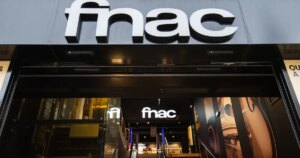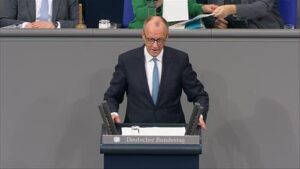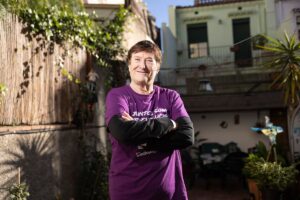
In the heart of Barcelona, the Argentine Consulate becomes an emotional territory. It is November 25th and, among contrasting accents and blue and gold shirts, marks the fifth anniversary of the death of Diego Armando Maradona. For many Argentines – and also for a large part of the world – Maradona goes far beyond football and delves into the cultural, emotional and mythical dimension. Among paintings, photographs, videos and a small Maradonian altar, comes Boca+Arte, a traveling exhibition born in Argentina that brings together 17 artists and which, once you cross the door, transforms into a refuge where art embraces football, the La Boca neighborhood and its club and the number 10.
“Football and Boca have marked our identity and have crossed borders,” said Rossana Surballe, consul general and ambassador of Argentina in Barcelona, during the inauguration. He also recalled that more than 180,000 Argentines live under the jurisdiction of the consulate – Catalonia, Aragon, Valencia and Andorra – of which 46,500 are registered in Barcelona. Many of them attended the event dressed in the colors of Boca Juniors and, before entering the main room, they were greeted by an altar – The Sanctuary of the D10S, by Ivan Recalde – with an old television with VHS lenses, t-shirts, scarves, candles and all kinds of devotional objects. “Diego is very present in this exhibition and in our lives. I want to remember him as a great Argentine who loved his country and his people, someone who made us very happy,” Surballe said. “He made the impossible possible, a neighborhood kid, with his virtues and his flaws,” added Camila Rabinovich, creator of the exhibition, as shouts dedicated to 10 erupted in the room.
The exhibition refers to the La Boca neighborhood, birthplace of the Boca Juniors Athletic Club, founded in 1905 by five Italian immigrants who sought to represent their community. “Boca is a feeling,” Surballe underlined. It is undoubtedly more than a club: its blue and gold colors – taken from the flag of the first ship to arrive at the port, of Swedish origin – and the nickname Xeneize – inherited from the Genoese immigration – tell a story of migration and belonging.
In the center of the room, an exhibition cube brings together photographs by different artists. Pancho Monti captures the bond between people and Maradona: from the intensity of the Bombonera – a stadium that does not vibrate, it beats, and which Diego himself defined as “the true temple of world football” – to the public who greeted him at the Casa Rosada in the midst of the pandemic. The contrast reveals the cultural dimension of the character: Maradona was a social phenomenon. Not only in Argentina, but also in Naples, where he played between 1984 and 1992, and where his figure acquired an almost religious character. And before that, at Barcelona, between 1982 and 1984, a period marked by injuries and hepatitis, but in which he left his mark on the dressing room and on the fans, who flocked attentively to the stadium to see him warm up.
Around him, Bruno Acanfora reinterprets classic works of universal art with Xeneize iconography; Photographer China Sanjuán captures the intensity of the fans at La Bombonera; and Ciro Pipoli provides images of the Neapolitan duel that dialogues with that of Buenos Aires. Additional screens show other pieces, while a ceiling reconstructs Maradona’s life through portraits of ordinary people, by Damián Cukierkorn (Pelusa Project).
“We are building a sense of belonging, an invisible thread that accompanies us when we are away from home and makes us feel part of something bigger,” explains Rabinovich. Boca+Arte will remain open until December 12, Boca Juniors Fan Day, with workshops and parallel activities. The choice of Barcelona is not random: both cities have grown with the constant arrival of immigrants and have shaped themselves around water, the Riachuelo and the Mediterranean. Buenos Aires and Barcelona appear as two distant shores, but united by popular roots and an identity that is also expressed through football.





